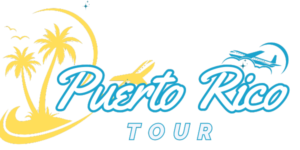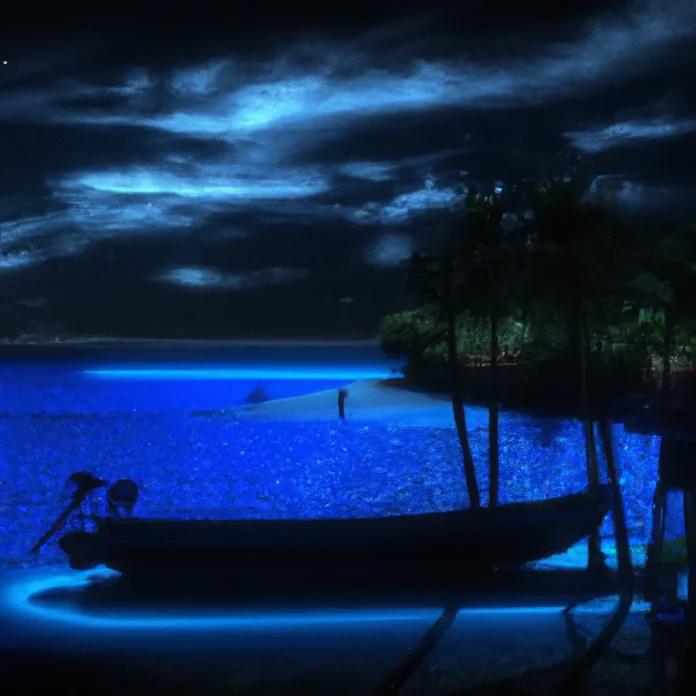Introduction to Bioluminescence in Puerto Rico
Bioluminescence is a captivating natural phenomenon that occurs when living organisms emit light. In Puerto Rico, this phenomenon is particularly spectacular, with some of the brightest bioluminescent bays in the world. This article aims to provide an extensive overview of bioluminescence in Puerto Rico, covering its scientific basis, the best locations to witness it, the organisms involved, and its significance to both the ecosystem and local culture.
What is Bioluminescence?
Bioluminescence is the production and emission of light by living organisms. This natural light is produced through a chemical reaction that occurs in specialized cells or organelles. The reaction typically involves a light-emitting molecule called luciferin and an enzyme known as luciferase. The light produced can vary in color, with blue and green being the most common wavelengths visible to the human eye.
The Science Behind Bioluminescence
The process of bioluminescence involves several key components:
– Luciferin: The light-emitting molecule that reacts with oxygen.
– Luciferase: The enzyme that catalyzes the reaction, leading to light production.
– Oxygen: This is essential for the chemical reaction to occur.
This biochemical reaction can result in various colors of light, depending on the type of luciferin and luciferase involved. The phenomenon serves various purposes in nature, including communication, camouflage, and attracting mates.
Bioluminescent Bays in Puerto Rico
Puerto Rico is home to three primary bioluminescent bays, each offering unique experiences and varying degrees of brightness. The most famous of these bays include:
Mosquito Bay
Located on the island of Vieques, Mosquito Bay is recognized as one of the brightest bioluminescent bays in the world. The bay is home to millions of dinoflagellates, microscopic plankton that emit light when disturbed. The best time to visit Mosquito Bay is during a new moon, as this allows for optimal visibility of the bioluminescence.
Laguna Grande
Situated in Fajardo, Laguna Grande is another prominent bioluminescent bay. This bay is also rich in dinoflagellates and offers kayaking tours that allow visitors to witness the glowing waters up close. The bioluminescence here is particularly striking during the darker months of the year.
La Parguera
La Parguera, located on the southwestern coast of Puerto Rico, offers a unique experience as it is one of the few bioluminescent bays accessible by boat. While it may not be as bright as Mosquito Bay, the experience of gliding through the glowing waters is unforgettable. Visitors can enjoy both the bioluminescence and the surrounding marine life, making it a popular destination for eco-tourism.
The Organisms Responsible for Bioluminescence
The primary organisms responsible for the bioluminescent display in Puerto Rico’s waters are dinoflagellates, a type of plankton. Among the various species, Pyrocystis fusiformis and Pyrocystis noctiluca are the most common contributors to the bioluminescent phenomenon.
Dinoflagellates: The Light Producers
Dinoflagellates are single-celled organisms that thrive in warm, brackish waters. When disturbed by movement—such as waves, boats, or swimming—the dinoflagellates emit light, creating a stunning visual effect. This light display serves as a defense mechanism, often startling potential predators.
Other Bioluminescent Organisms
While dinoflagellates are the primary contributors to the bioluminescent bays, other marine organisms also exhibit bioluminescence. These include certain species of jellyfish, fish, and bacteria. The light produced by these organisms can serve various functions, such as attracting prey or deterring predators.
Best Times to Experience Bioluminescence
To fully appreciate the bioluminescent displays in Puerto Rico, it is essential to consider the timing of your visit. The light from bioluminescent organisms is best viewed under specific conditions:
Moon Phases
The brightness of bioluminescence is significantly affected by moonlight. During a full moon, the glow of the bioluminescent organisms can be obscured. Therefore, the best time to observe bioluminescence is during a new moon when the sky is darkest.
Weather Conditions
Calm nights with little to no wind provide the best conditions for viewing bioluminescence. Windy weather can disrupt the calm surface of the water, diminishing the visibility of the glow.
Time of Year
While bioluminescence can be observed year-round, certain seasons may offer enhanced visibility. The summer months often see an increase in dinoflagellate populations, leading to brighter displays.
Ecological Significance of Bioluminescence
Bioluminescence plays a critical role in the ecology of marine environments. It influences various aspects of the ecosystem, including predator-prey interactions and nutrient cycling.
Predator-Prey Dynamics
The bioluminescent glow can serve as a warning signal for predators. When prey organisms emit light, they may deter potential threats. Conversely, bioluminescence can also attract predators, creating a complex relationship between light production and survival.
Nutrient Cycling
Bioluminescent organisms contribute to the cycling of nutrients within their ecosystems. The decomposition of these organisms after they die can release nutrients back into the water, supporting the growth of other marine life.
Cultural Importance of Bioluminescence
Bioluminescence holds cultural significance for the people of Puerto Rico. The phenomenon has inspired local legends and traditions, and it plays a role in the tourism industry.
Local Legends and Myths
Many local tales surround the bioluminescent bays, often attributing the glow to spirits or magical creatures. These stories enhance the cultural richness of the area and attract visitors interested in both nature and folklore.
Tourism and Economic Impact
Bioluminescent bays are significant tourist attractions that contribute to the local economy. Kayaking tours, eco-tours, and educational programs focused on bioluminescence draw visitors from around the world, providing economic benefits to local communities.
Responsible Tourism Practices
As interest in bioluminescence grows, it is essential to promote responsible tourism practices to protect these delicate ecosystems.
Guided Tours
Opting for guided tours led by knowledgeable tour operators can enhance the experience while ensuring that ecological guidelines are followed. These operators often emphasize conservation and the importance of minimizing human impact on the environment.
Minimizing Light Pollution
Visitors should be mindful of light pollution when visiting bioluminescent bays. Using minimal artificial light can help preserve the natural beauty of the bioluminescence.
Respecting Wildlife
Maintaining a respectful distance from wildlife and refraining from touching or disturbing the organisms is crucial for their survival. Educating visitors about the ecological significance of these organisms can foster a greater appreciation for their preservation.
Conclusion
Bioluminescence in Puerto Rico is a remarkable natural phenomenon that offers a glimpse into the fascinating world of marine life. With its stunning displays and ecological significance, it is an experience that resonates with both locals and visitors alike. By understanding the science, the best viewing conditions, and the importance of responsible tourism, we can all appreciate and protect these glowing waters for future generations.
For those interested in experiencing the beauty of Puerto Rico’s bioluminescent bays, consider joining a Puerto Rico Tour. Visit Puerto Rico Tour for more information on guided experiences that respect and celebrate this natural wonder.




















